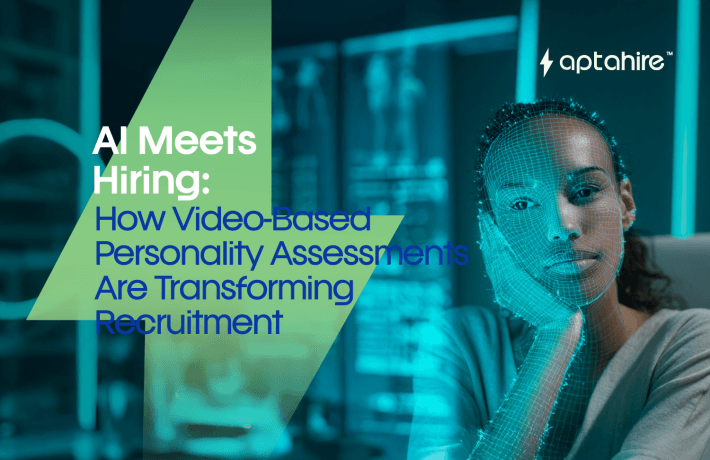Improving Your Recruitment Funnel with Data-Driven Insights

As HR professionals, we know that hiring isn’t just about filling positions; it’s about finding the right people who will thrive in our organization. While experience and intuition play a role, data-driven insights can refine your recruitment funnel, making it more strategic and efficient. If you’re struggling with high drop-off rates, long hiring cycles, or mismatched hires, it’s time to let data guide your decisions.
Understanding the Recruitment Funnel
Every hiring journey follows a structured path:
- Awareness – Candidates discover your company and job openings.
- Consideration – They evaluate company culture, benefits, and growth potential.
- Application – The formal job application process begins.
- Screening & Interviewing – Candidates are assessed for skills, culture fit, and potential.
- Offer & Hiring – The final decision is made, and an offer is extended.
- Onboarding – The new hire integrates into the team.
Each stage presents challenges, but with the right data, we can make informed decisions that enhance efficiency and improve hiring outcomes.
Key Metrics That Matter
To optimize your recruitment funnel, focus on these essential data points:
1. Source Effectiveness
Which channels bring in the best hires, LinkedIn, job boards, referrals, or direct applications? Tracking the success rate of each source helps allocate resources effectively and maximize ROI.

2. Application Drop-off Rates
A complicated or time-consuming application process can drive away top talent. If drop-off rates are high, simplify the process, reduce unnecessary steps, optimize for mobile, and ensure clarity in job descriptions.
3. Time to Hire
A prolonged hiring cycle can cost you top talent. Tracking how long it takes to move candidates from application to offer helps identify bottlenecks and refine processes.
4. Interview-to-Hire Ratio
Are too many candidates being interviewed for a single role? A high ratio may indicate inefficiencies in screening. Using AI-powered resume reviews and skill assessments can improve pre-screening and focus interviews on top candidates.
5. Candidate Experience & Feedback
The hiring process reflects your employer brand. Gathering feedback from candidates, whether hired or not; provides insights into potential improvements and strengthens your reputation in the talent market.
Leveraging Data for Smarter Hiring Decisions
Now that you know what to track, let’s explore how to use these insights to optimize your recruitment strategy.
1. Fine-Tune Job Descriptions
Data can reveal which job postings attract the best candidates. Test different wording, highlight key benefits, and use inclusive language to expand your talent pool.
2. Optimize the Application Process
If drop-off rates are high, streamline applications by eliminating redundant fields, improving mobile compatibility, and ensuring a seamless user experience.
3. Utilize AI and Automation
AI-driven tools can screen resumes, schedule interviews, and assess candidates, reducing manual effort while ensuring a fair, bias-free process.
4. Personalize Candidate Engagement
Data helps tailor the recruitment experience. Automated yet personalized email follow-ups, targeted job recommendations, and engaging employer brand content can enhance candidate interaction.
5. Predict Hiring Success with Analytics
Predictive analytics can identify patterns in successful hires, helping HR teams make evidence-based hiring decisions rather than relying on gut feeling.
Aptahire- Your AI Hiring Assistant
Hiring the right talent isn’t just about filling positions, it’s about making informed decisions that drive long-term success. Aptahire helps you improve your recruitment funnel by providing data-driven insights at every stage. From AI-powered resume screening to structured interviews and real-time candidate analysis, Aptahire platform ensures you’re not just hiring fast, but hiring right. With smart reports, skill-based evaluations, and automated feedback, you get a clearer picture of every candidate, making your hiring process more efficient, fair, and consistent. Say goodbye to guesswork and hello to smarter, data-backed hiring!
Final Thoughts
A data-driven recruitment funnel isn’t just about speed, it’s about precision. By leveraging insights, we can attract better talent, enhance candidate experience, and build stronger teams. If you’re not already tracking recruitment data, now is the time to start. The insights you uncover will refine your hiring process and give you a competitive advantage in today’s fast-evolving talent landscape.
Need help optimizing your recruitment funnel? Start with data and watch your hiring strategy transform.
FAQs
1. How can data-driven insights improve my hiring process?
Instead of relying on gut feelings, data helps you make smarter decisions. With AI-powered screening, structured interviews, and real-time reports, you can identify top candidates faster and with more confidence.
2. What kind of insights does Aptahire provide?
Aptahire gives you a deep dive into each candidate’s skills, strengths, and areas for improvement. You’ll get AI-driven reports, interview performance analysis, and actionable feedback to refine your hiring strategy.
3. Will this help me reduce time-to-hire?
Absolutely! By automating resume screening, interview scheduling, and candidate evaluations, Aptahire cuts down the time spent on manual processes, helping you hire the right talent much faster.
4. Can data-driven hiring really reduce bias?
Yes! Aptahire ensures fair assessments by focusing on skills, knowledge, and communication, removing unconscious biases that often creep into traditional hiring methods.
5. Is Aptahire suitable for high-volume hiring?
Definitely! Whether you’re hiring for a few roles or managing bulk interviews, Aptahire optimizes your recruitment funnel to handle large applicant pools efficiently and effectively.
6. What is a data-driven recruitment strategy?
It’s a hiring approach that uses AI and analytics to track candidate data, improve efficiency, and make better hiring decisions. By analyzing key metrics, recruiters can identify trends, reduce bias, and optimize their recruitment process for better results.
7. How to build a recruitment funnel?
A recruitment funnel includes key steps: attracting candidates through job posts, screening resumes using AI, conducting structured interviews, selecting top talent based on data, and smoothly onboarding new hires. This structured approach ensures a faster, fairer, and more efficient hiring process.
8. What are the 3 most important recruitment analytics?
- Time-to-Hire – Measures how quickly a role is filled.
- Quality of Hire – Assesses new hire performance and retention.
- Source Effectiveness – Identifies the best hiring channels to attract top talent.
9.What is funnel analysis in recruitment?
Funnel analysis tracks candidate movement through hiring stages to spot drop-offs and bottlenecks. It helps recruiters understand which stages need improvement, optimize the process, and ensure a smoother, more efficient hiring experience for both candidates and hiring managers.



